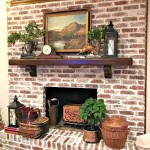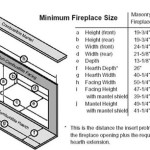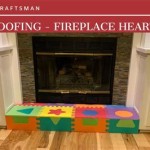Stand Alone Outdoor Fireplaces: Heating and Enhancing Your Outdoor Living Space
Stand alone outdoor fireplaces are becoming increasingly popular as homeowners seek to extend their living spaces beyond the confines of their indoor environments. These structures offer a unique blend of functionality and aesthetic appeal, providing warmth, ambiance, and a focal point for outdoor gatherings. Understanding the various aspects of stand alone outdoor fireplaces, from their types and materials to installation and maintenance, is crucial for making an informed decision about incorporating one into your property.
Unlike built-in fireplaces that are integrated into the existing architecture of a home or patio, stand alone fireplaces are self-contained units that can be placed in almost any outdoor location. This portability and ease of installation are significant advantages, allowing homeowners to experiment with different placements and reconfigure their outdoor spaces as needed. Furthermore, the variety of styles and materials available ensures that there is a stand alone outdoor fireplace to complement virtually any landscape design.
Types of Stand Alone Outdoor Fireplaces
Stand alone outdoor fireplaces can be categorized based on their fuel source and design. The most common types include wood-burning, gas-burning, and electric fireplaces. Each type offers distinct advantages and disadvantages, influencing the overall cost, maintenance requirements, and environmental impact.
Wood-Burning Fireplaces:
These are perhaps the most traditional type, offering the authentic crackling sound and aroma that many associate with a classic fireplace experience. Wood-burning fireplaces typically consist of a firebox, a chimney for venting smoke, and a base for support. They require a readily available source of firewood and regular cleaning to remove ash and soot. Safety is paramount with wood-burning fireplaces, as sparks and embers can pose a fire hazard. Therefore, it's essential to use a spark screen and maintain a safe distance from flammable materials.Design variations within wood-burning fireplaces are diverse. Chiminea-style fireplaces, originally from Mexico, are known for their distinctive bulbous shape and vertical chimney. These are particularly effective at radiating heat and directing smoke upwards. Other designs include open-front fireplaces, which offer a wider view of the flames, and enclosed fireplaces with doors, which provide greater control over the fire and reduce the risk of sparks escaping.
Gas-Burning Fireplaces:
Gas fireplaces offer the convenience of instant on/off functionality and precise temperature control. They can be fueled by either natural gas or propane, with the choice depending on the availability of a natural gas line and the homeowner's preference. Gas fireplaces produce less soot and ash than wood-burning models, reducing the need for frequent cleaning. However, they may require professional installation, particularly if connecting to a natural gas line.Gas fireplaces often feature realistic-looking ceramic logs that mimic the appearance of burning wood. Some models also include decorative glass or stones, allowing for customization of the fireplace's aesthetic. Venting options for gas fireplaces vary, with some requiring a dedicated chimney or vent and others being vent-free. Vent-free models are generally less efficient and may not be suitable for enclosed spaces due to the potential for carbon monoxide build-up.
Electric Fireplaces:
Electric fireplaces are the simplest to install and operate, requiring only a standard electrical outlet. They produce heat using electric coils and often feature realistic flame effects created by LED lights. Electric fireplaces are a safe and convenient option, particularly for those who prioritize ease of use and minimal maintenance. They do not produce any emissions or require venting, making them suitable for indoor and outdoor use.While electric fireplaces may not provide the same level of heat as wood-burning or gas-burning models, they can still effectively warm a small to medium-sized outdoor space. They are also a good choice for those who primarily want the ambiance of a fireplace without the added responsibility of managing a fire. The visual appeal of electric fireplaces has improved significantly in recent years, with many models offering adjustable flame colors and brightness settings.
Materials Used in Stand Alone Outdoor Fireplaces
The materials used in constructing a stand alone outdoor fireplace significantly impact its durability, aesthetic appeal, and heat retention capabilities. Common materials include brick, stone, concrete, metal, and various combinations thereof.
Brick:
Brick is a classic choice for outdoor fireplaces, known for its durability and resistance to heat. Brick fireplaces can be constructed in a variety of styles, from traditional to contemporary, and can be customized with different brick colors and patterns. Brick is also relatively low-maintenance, requiring only occasional cleaning to remove dirt and grime.However, brick fireplaces can be relatively heavy and require a solid foundation to support their weight. They also tend to retain heat well, which can be an advantage in colder climates but may be less desirable in warmer areas. The cost of brick fireplaces can vary depending on the type of brick used and the complexity of the design.
Stone:
Stone fireplaces offer a natural and rustic aesthetic, blending seamlessly with outdoor environments. Stone can be sourced from various locations, resulting in a wide range of colors, textures, and patterns. Like brick, stone is durable and resistant to heat, but it can be more expensive and challenging to work with.Stone fireplaces often require skilled craftsmanship to ensure proper construction and structural integrity. The irregular shapes and sizes of natural stones can make it difficult to achieve a uniform appearance. However, the unique character and natural beauty of stone fireplaces make them a popular choice for homeowners seeking a distinctive outdoor feature.
Concrete:
Concrete fireplaces offer a contemporary and minimalist aesthetic, often featuring clean lines and geometric shapes. Concrete is a versatile material that can be molded into various forms and finished with different textures and colors. Concrete fireplaces are durable and relatively low-maintenance, but they can be susceptible to cracking if not properly reinforced.Precast concrete fireplaces are a popular option, offering the convenience of modular construction and easy installation. These fireplaces are typically made in a factory and delivered to the site in sections, which are then assembled and secured. Concrete fireplaces can also be customized with various aggregates and pigments to achieve a unique look. The cost of concrete fireplaces can vary depending on the size, design, and finish.
Metal:
Metal fireplaces, particularly those made of stainless steel or powder-coated steel, offer a sleek and modern aesthetic. Metal is a durable and lightweight material that can be easily shaped and fabricated. Metal fireplaces are often used in contemporary outdoor spaces and can be combined with other materials, such as stone or wood, for added visual interest.Metal fireplaces can be susceptible to rust and corrosion if not properly maintained, particularly in coastal environments. However, powder-coating can provide an extra layer of protection against the elements. Metal fireplaces tend to heat up quickly and cool down quickly, making them a good choice for situations where instant heat is desired. The cost of metal fireplaces can vary depending on the type of metal used and the complexity of the design.
Installation and Maintenance Considerations
Proper installation and regular maintenance are essential for ensuring the safe and efficient operation of a stand alone outdoor fireplace. Whether you choose to install the fireplace yourself or hire a professional, it's crucial to follow all manufacturer's instructions and local building codes. Maintenance requirements vary depending on the type of fireplace and the materials used in its construction.
Installation:
Before installing a stand alone outdoor fireplace, it's important to select a suitable location that is away from flammable materials, such as trees, shrubs, and overhanging structures. The fireplace should be placed on a level surface, such as a concrete patio or a gravel bed, to ensure stability. For wood-burning fireplaces, it's essential to have a clear chimney path to allow for proper venting of smoke. Gas fireplaces may require a professional to connect to a natural gas line or install a propane tank.Electric fireplaces are the easiest to install, requiring only a standard electrical outlet. However, it's important to use an outdoor-rated extension cord if the outlet is not located directly adjacent to the fireplace. Regardless of the type of fireplace, it's crucial to follow all safety precautions and consult with a qualified professional if you have any questions or concerns.
Maintenance:
Regular maintenance is essential for prolonging the life of a stand alone outdoor fireplace and ensuring its safe operation. For wood-burning fireplaces, this includes removing ash and soot after each use and cleaning the chimney at least once a year to prevent creosote build-up. Creosote is a highly flammable substance that can ignite and cause a chimney fire.Gas fireplaces require less frequent maintenance than wood-burning models, but it's still important to inspect the burner and gas lines periodically for leaks and damage. The ceramic logs or decorative glass should also be cleaned regularly to remove soot and debris. Electric fireplaces require minimal maintenance, but the LED lights may need to be replaced periodically. It's also important to keep the fireplace clean and free of dust and dirt.
In addition to routine maintenance, it's important to protect the fireplace from the elements when it's not in use. This can be achieved by covering the fireplace with a waterproof cover or storing it in a shed or garage during the off-season. Protecting the fireplace from moisture and extreme temperatures can help prevent rust, corrosion, and other forms of damage.

A Stand Alone Outdoor Fireplace Elegance And Style Right In Your Backyard Creative Boundaries

How To Build An Outdoor Fireplace Step By Guide Buildwithroman

45 Beautiful Outdoor Fireplace Ideas Install It Direct

Outdoor Fireplace Kits Masonry Stone

30 Outdoor Fireplace Ideas Cozy Fireplaces

10 Outdoor Fireplace Ideas You Ll Want To Copy Bob Vila

7 Outdoor Fireplace Design Ideas For Every Budget Big Rock Landscaping

How To Build An Outdoor Fireplace Step By Guide Buildwithroman

Outdoor Fireplace Design Secrets From An Expert

How To Choose An Outdoor Fireplace The Home Depot
Related Posts








